Colugos
Alternatively known as “flying lemurs”, colugos are gliding mammals commonly found in Asia and the Philippines. Their connected, star body structure gives them a fascinating appearance among the primates group. They are arboreal and nocturnal, meaning they are adapted to nighttime environments. Their large eyes help them navigate and they can cover huge distances in a single glide or leap.
Scientific Classification
Kingdom | Animalia |
Phylum | Chordata |
Class | Mammalia |
Order | Dermoptera |
Family | Cynocephalidae |
Species
There exist only two species of Colugos which form the entire Cynocephalidae family. Although these species are closely related in terms of their physical adaptations and gliding abilities, they are classified based on their ecological niches. This geographical distribution is due to their slightly different foraging, and gliding abilities in their daily lives.
Names | Description |
Sunda Flying Lemur (Galeopterus variegatus) | They are found in Southeast Asia in areas of Thailand and Malaysia. Characterized by greyish-brown fur and their patagium membrane which they use to fly across trees. |
Philippine Flying Lemur (Cynocephalus volans) | These creatures are found across the Philippine archipelago such as the forests of Mindanao. They have a slightly contrasted reddish brown coloration, with the same membrane and gliding properties. |
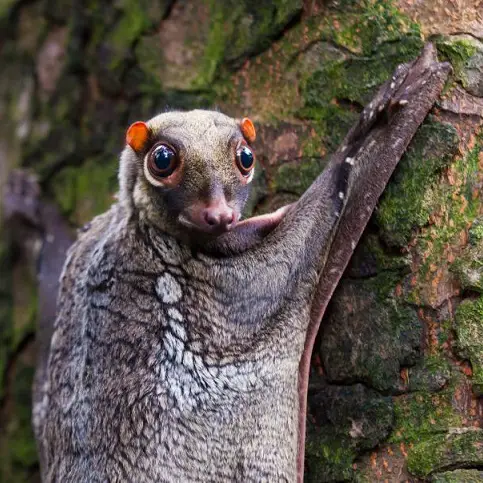
Physical Characteristics of Colugos
Size and Weight: As compared to other mammals and lemur species, the colugos are smaller in size. They can be up to 14-16 inches long and can weigh around 2.2-4.4 lbs. The weight distribution across the membrane helps them balance while gliding.
Speed: Colugos are fast in the air as they can glide and cover distances up to 230 feet in a single leap. The Philippine or the Malayan colugo can glide to a maximum of 490 feet, making it the fattest among both species. However, they may not be as fast when moving on land.
Body: They have a compact head and body. The gliding membrane is called patagium which connects the front and rear limbs and the tail. This body structure helps them in aerial movement without losing altitude. Moreover, the large forward-facing eyes give these creatures a binocular vision to navigate at night. They have small ears and a small mouth.
Teeth: Like lemurs, colugos have special dental teeth of comb-like incisors. They use their teeth for grooming and maintaining their fur which in turn helps in their flights.
Fur and Coloration: Colugos have thick and soft fur that is mostly brown and gives red and gray hues. They also have a mottled pattern across their body which allows them to camouflage on tree barks. This allows them to rest while hiding from their predators.
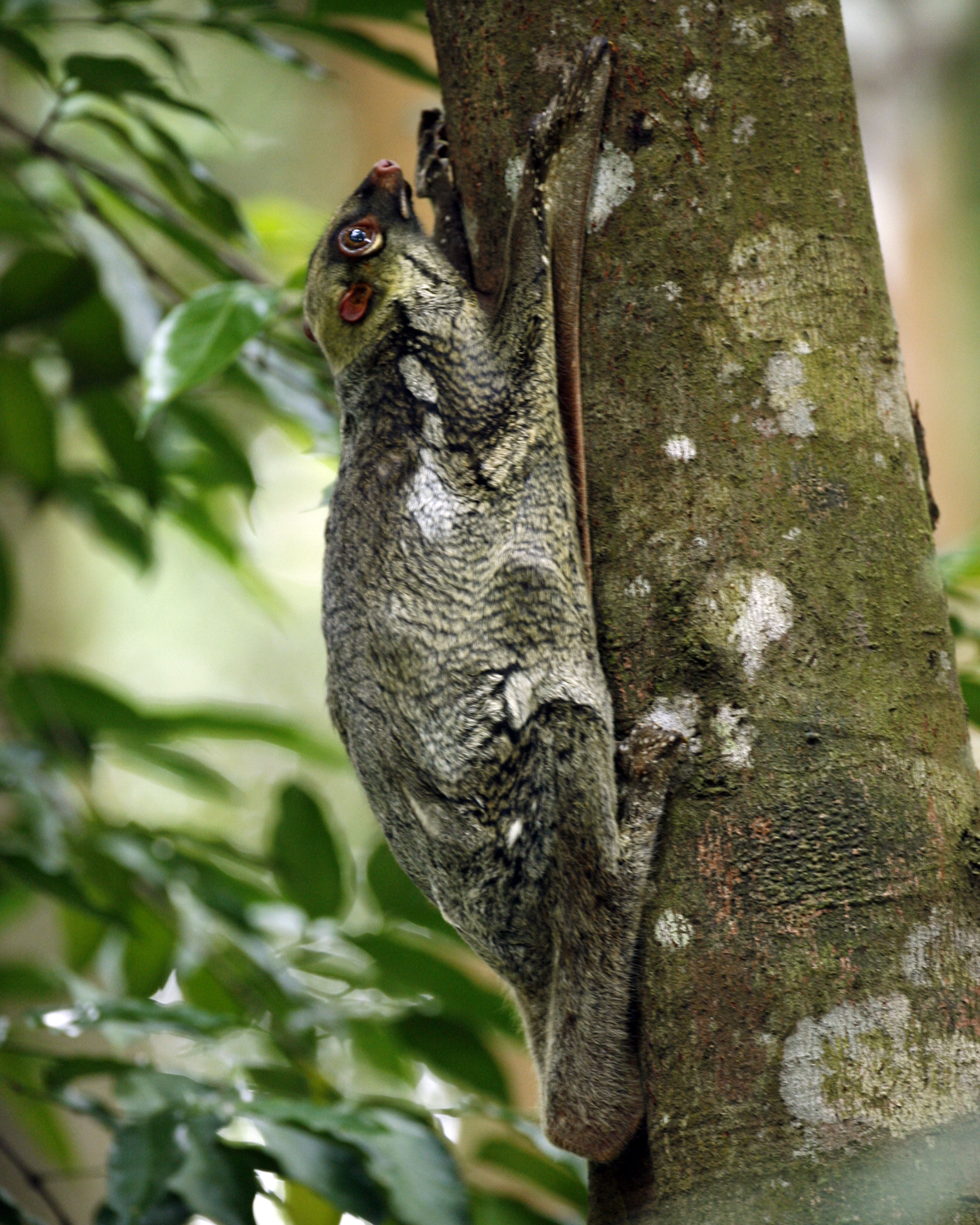
Size and Weight
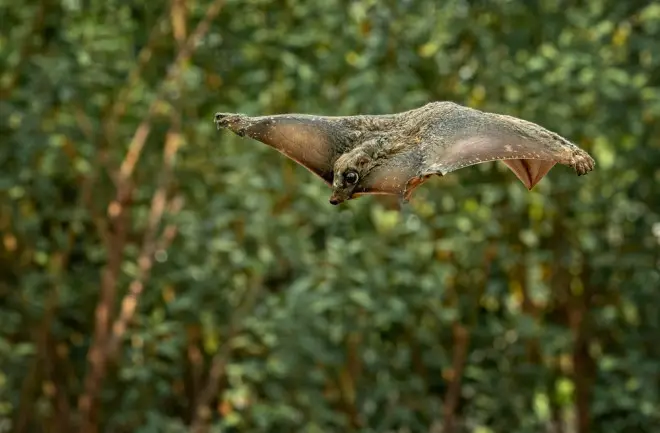
Speed
Why Are They Called Colugos?
The name colugo comes from their family name Cynocephalidae which means “dog head.” It was initially named on their broad head appearance and short snouts resembling that of puppies and dogs. Other than the physical head appearance, they do not share other characteristics with the dog species.
Some people also call them flying lemurs since they have similar appearances to the lemur species as well. However, they use gliding for movement and not flying.
Diet and Digestion
Colugos are known as strict herbivores and they consume young leaves, flowers, sap, shoots, and fruit. They specialize in extracting nutrients from fibrous plants that they can conserve for longer periods.
Their digestive system has an enlarged gastrointestinal tract that ferments complex fibers for easy absorption. Their dietary needs vary based on the seasonal availability of plant foods. Digestion takes a long time which allows maximum nutrient absorption that helps them sustain for longer periods during the day.
Behavioral Adaptations of Colugos
Social Interaction
Colugos are solitary primates that only interact during the breeding season. The rest of the time is spent in individual territories during the day. They hide by clinging onto trunks or tree holes, which camouflages them from other colugos and predators.
Locomotion
Their flights are less strong than bats but can travel longer distances when gliding. More often they prefer to stay in one place such as the bark and glide from tree to tree. When in contact with a surface such as branches, they move by hopping or hanging upside down like bats.
Foraging and Feeding
Colugos forage for food at night. Since they eat leaves and other plant materials, they can easily find their required diet except for extreme weather. They prefer to consume during the night which gives them enough nutrients to survive during daylight.
Defense Mechanisms
To save themselves from attacking predators, colugos either stay motionless in their place or glide carefully to a different tree. Their agile and strong gliding motion makes it difficult for the predators to follow. Unlike other mammals who communicate and share defense mechanisms with their fellow species, colugos prefer to only protect their self.
Communication
Colugos are silent creatures. They don’t communicate unless it’s mating season or during intruding. They make subtle vocal sounds and body movements to attract mates for breeding.
Reproduction and Parenting
Colugos are open to mating all year round, where subtle movements and voices lead the male and female to come together and mate in a hidden place. The gestation period is shorter than most mammals but it varies based on species types. The Sunda flying lemurs stay in gestation for 60 days while the Philippine flying lemurs take 105 days.
Mostly, the colugos give birth to one offspring which is often underdeveloped and weighs only 1.2 oz. Despite being placental, the mothers take care of their newborns during the first 6 months. They wrap the offspring by folding their membrane around their stomach. This pouch keeps the infant warm and safe from environmental factors. They feed on their mother’s milk for about six months and take their support for transportation. As they reach two to three years of age, they learn how to glide and sustain themselves, leaving excessive parenting.
Mortality Rate and Lifespan
The lifespan of Colugos in captivity averages up to 15 years. Their average age of survival in the wild has not yet been determined. However, similar to lemurs, it can be assumed that they have a shorter lifespan in their natural habitat.
The survival rate of newborns is relatively low since most of them are underdeveloped and require excessive care to reach the age of maturity. The first six months are crucial for their growth and survival. Deforestation and fragmentation are great threats to their survival in their habitats.
Ecological Importance
Like all mammals, Colugos are essential to the ecology they belong. Found in dense forests and island regions, these animals work as seed dispersers and pollinators contributing to the plant ecosystem. The seed and pollen gets stuck to their fur, dispersing as they glide in the air. On the other hand, they also consume plant species and help regulate forest regeneration and herbivorous diet for other species.
Conservation Status and Efforts
As deforestation, logging, and agricultural expansion increase, the status of colugo species becomes endangered. IUCN initially declared the Philippine flying lemur as “vulnerable” which was later changed to “least concern” These species are specifically under concern since they are also hunted for their meat and fur and prey to the endangered Philippine eagle.
Efforts and majors are placed to control the hunting habits of these species as they
play a significant role in the ecology and are rare species on the planet.
Fun Facts about Colugos
- The colugo species diverged from their ancestral mammals more than 80 million years ago.
- Colugos have a broad and flat skull which creates big hollow eye sockets that give them clear vision.
- Although these creatures find their main habitat in trees, they are not skilled climbers. This is because they don’t have thumbs which help support their body when climbing.
- These animals not only have strong vision but also a depth perception. It allows them to sense how high they are gliding in the dark.
- Tree shrews are considered sisters to the colugos in some studies.
Cultural Significance
Colugos do not have a strong cultural significance and are mostly found in research for evolutionary biology. Thief taxonomy and relationship in the primates group make them a strong contender for scientists who study arboreal locomotion.
The nocturnal behavior and habits of colugos are often discussed in the folklore and traditional stories across Southeast Asia. In the Philippine region, they often become prey to humans and other predators.
FAQs- Frequently Asked Questions
What is unusual about colugo?
Colugos have a gliding membrane called a patagium, enabling them to glide up to 490 feet between trees.What does a colugo eat?
Colugos are herbivores and eat young leaves, flowers, sap, shoots, and fruit.What is the behavior of a colugo?
Colugos are nocturnal and solitary. They glide between trees, remain motionless to avoid predators, and forage at night.How long does a colugo live?
In captivity, colugos live up to 15 years. Their lifespan in the wild is uncertain.How many babies do colugos have?
Colugos typically give birth to one underdeveloped baby.Is a colugo a monkey?
No, colugos are not monkeys. They belong to the order Dermoptera and are often called “flying lemurs.”How big can a colugo get?
Colugos can grow up to 14–16 inches long and weigh between 2.2–4.4 lbs.How far can a colugo fly?
Colugos can glide up to 490 feet in a single leap.Is colugo male or female?
Both male and female colugos exist.Are colugos related to humans?
Colugos are not directly related to humans but are primate relatives within the group of mammals.How does a colugo reproduce?
Colugos mate year-round, with females giving birth to one baby after a 60–105 day gestation period.What is a fun fact about a colugo?
Colugos lack thumbs, which makes climbing difficult despite their arboreal lifestyle.What is the habitat of a colugo?
Colugos live in tropical forests of Southeast Asia and the Philippines.Do colugos live in groups?
No, colugos are solitary animals and only interact during the breeding season.What eats a colugo?
Colugos are preyed upon by large birds of prey like the Philippine eagle.What is a colugo’s common name?
Colugos are commonly called “flying lemurs,” though they are not true lemurs.How do colugos communicate?
Colugos communicate minimally, using subtle sounds and body movements, especially during mating.Do colugos have wings?
No, colugos don’t have wings but use a large gliding membrane (patagium) to glide.Are colugos endangered?
Philippine colugos are currently listed as “least concern,” though deforestation threatens their habitats.When were colugos discovered?
Colugos have been known to science since the 18th century, though their evolutionary history dates back millions of years.Are humans related to colugos?
Humans and colugos are not closely related but share a distant evolutionary lineage.Are colugos herbivores?
Yes, colugos are strict herbivores, primarily eating leaves and plant matter.What does colugo look like?
Colugos have compact heads, large forward-facing eyes, and a brown mottled fur that helps them camouflage on tree bark.What are some fun facts about colugo?
- Colugos can glide up to 490 feet.
- They have comb-like incisors for grooming.
- They diverged from their ancestors 80 million years ago.
What is the habitat of the colugo?
Colugos are found in tropical forests across Southeast Asia and the Philippines.What color is a colugo?
Colugos are mostly brown with red or gray hues and mottled patterns for camouflage.Are colugos real?
Yes, colugos are real gliding mammals found in Southeast Asia and the Philippines.What family is the colugo in?
Colugos belong to the family Cynocephalidae.Where can you find colugo?
Colugos can be found in tropical forests in Southeast Asia, Thailand, Malaysia, and the Philippines.How long do colugos live?
Colugos can live up to 15 years in captivity.How far can colugos fly?
Colugos can glide distances of up to 490 feet.Do colugos have claws?
Yes, colugos have sharp claws used for clinging to tree bark.How do colugos get their food?
Colugos forage for leaves, sap, and fruit at night, relying on their keen eyesight to navigate in the dark.Do colugos have thumbs?
No, colugos lack opposable thumbs, making them poor climbers.Is a colugo a carnivore?
No, colugos are herbivores and feed exclusively on plant material.
Learn More About Colugos
On this page, you are invited to explore our articles about the fascinating behaviors of colugos.
These articles address common questions about colugos, including their diet, nocturnal activities, unique gliding abilities, and reproductive cycle. You’ll also learn about their interactions within their natural habitats and their importance to the ecosystem.
Scroll down to discover the unique characteristics of colugos and gain insight into their extraordinary way of life.
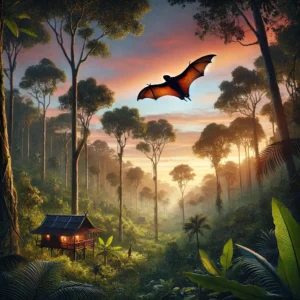
Colugo Conservation: Protecting Southeast Asia’s Gliding Mammals
Colugos, also known as flying lemurs, are one of Southeast Asia’s most fascinating and unique mammals. Found primarily in the

Colugos and Camouflage: How They Evade Predators in the Wild
Colugos, often referred to as “flying lemurs” (though they neither fly nor are true lemurs), are extraordinary creatures known for
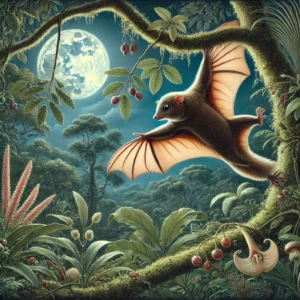
Diet of the Colugo: What Fuels These Nocturnal Gliders?
The colugo, often referred to as the flying lemur, is one of the most unique creatures in the animal kingdom.
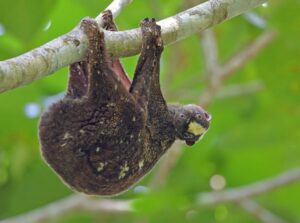
Philippine Flying Lemur (Cynocephalus volans): Nature’s Gliding Marvel
The Philippine Flying Lemur, also known as Cynocephalus volans or locally called Kagwang, is one of nature’s most fascinating creatures.
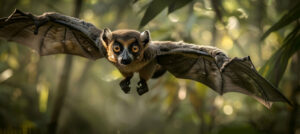
Sunda Flying Lemur: The Gliding Marvel of Southeast Asia
The Sunda flying lemur (Galeopterus variegatus), also known as the Malayan flying lemur or Malayan colugo, is one of nature’s

Why Colugos Are Key to Forest Regeneration and Ecosystem Balance
Colugos, also known as “flying lemurs,” are remarkable gliding mammals that play a critical role in maintaining the balance of
